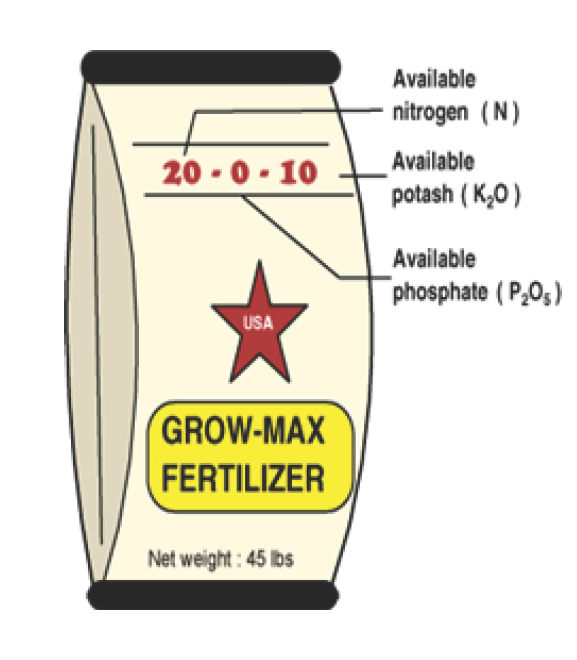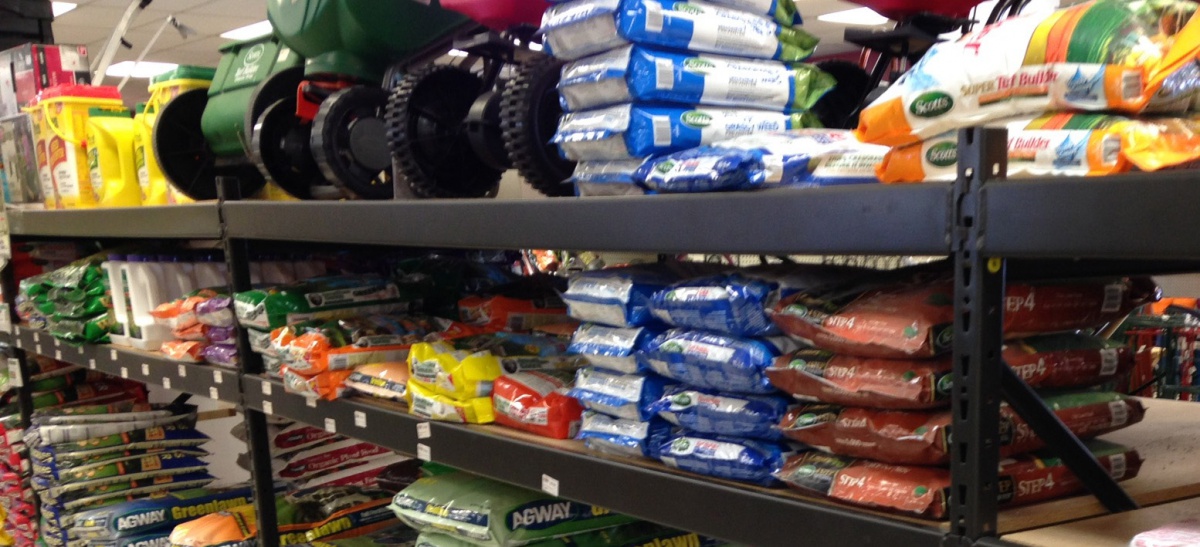Your soil test results tell you to apply a certain amount of fertilizer per 1,000 square feet and you’re confused about what to do next. How large is 1,000 square feet? How much fertilizer do you need to buy? How do you figure out if your spreader is putting on the correct amount?
Step 1 - Measure the area
The first step is to determine the area or square footage of your lawn or garden space. Look at your space, measure it, make a rough sketch, and divide it up into a group of squares, rectangles, and/or triangles. Math problems often cause us anxiety, but don’t worry; some simple formulas will help solve the problem. For example, the square footage or area of a rectangle or square is simply the length multiplied by the width. Areas for common shapes are provided here.
![]()
The first step is to determine the area or square footage of your lawn or garden space.Look at your space, measure it, make a rough sketch, and divide it up into a group of squares, rectangles, and/or triangles.
Step 2 - Determine how much fertilizer to buy and apply
Let’s say your front lawn measures 100 feet long by 50 feet wide. We know from the formula above that this equals 5,000 square feet in area (100’ x 50’). Lawn fertilizers usually tell us how many square feet each bag will cover. For example one popular lawn fertilizer, 20-0-10, indicates that their 45 pound bag covers 10,000 square feet. For your 5,000 square foot front lawn, you will only need to apply half the bag.
The New Hampshire turf fertilizer law limits the rate of fertilizer that retail fertilizers can recommend for lawns. This means the customer can usually trust the label to provide the appropriate rate to apply to established turf. Research suggests that healthy grass can use 0.9 lbs of actual nitrogen per 1,000 square feet per application and that applying more than that may contribute to water degradation. Multiple applications can be used per year, depending on the maintenance level desired, as long as at least 20% of the nitrogen is in slow-release form and the total nitrogen applied does not exceed 3.25 lbs annually.
In our example, the 45 pound bag contains 20% nitrogen (20-0-10) or 9 pounds of actual nitrogen (45 pounds x .20), so this bag will cover 10,000 square feet. It is enough for two applications to your 5000 square foot lawn, but only if you calibrate your spreader correctly. Seal up the bag and store unused fertilizer in a dry, indoor spot away from children and pets, for later use.
If in doubt about how much fertilizer to buy, use the handy chart below. Or, do the math yourself:
Bag weight (lbs) x % nitrogen = lbs of nitrogen in the bag
(Lbs of nitrogen /0 .9 lbs per 1000 sq ft.) x 1000 = number of square feet covered by one bag

DID YOU KNOW?
The New Hampshire turf fertilizer law limits the rate of fertilizer that retail fertilizers can recommend for lawns.
Step 3 – Calibrate your fertilizer equipment
Calibrate or test your spreader equipment each spring to ensure it is operating properly. Don’t rely only on the manufacturer settings provided on the fertilizer bag. How fast you walk affects the amount of fertilizer applied from a push spreader.
Materials Needed
• Sheet of plastic
• Scale or balance
• Measuring container
• Fertilizer
• Tape measure
1. Spread out the sheet of plastic on a flat surface outdoors, perhaps your driveway.
2. Use the tape measure to measure the length and width of the plastic surface.
3. Determine the square footage of this surface by multiplying the length times the width. Example: 20’ x 30’ sheet = 600 square feet.
4. Fill the spreader’s hopper with fertilizer.
5. Many fertilizer bags will indicate what setting to use for a particular brand of spreader. Use this as the starting setting. If unknown, select a setting near the middle of its range.
6. Weigh the empty container. This will be the “tare” weight. Example: 2oz.
7. Begin applying the fertilizer over the plastic sheet walking at your normal rate.
8. When the entire area of the plastic has been covered, stop, carefully gather all the fertilizer from the sheet and place it in the empty container.
9. Weigh this container. Record the weight and subtract the tare weight (the empty container) from this figure. The net result is the amount of fertilizer applied to that square footage. Is the amount of fertilizer collected the correct amount for this size area? If not, change the setting and redo the steps.

In our example, the 45-pound bag of fertilizer we selected has an analysis of 20-0-10. The chart above indicates that this bag will cover approximately 10,000 square feet at the desired nitrogen rate. The target fertilizer rate would be 4.5 lbs per 1000 square feet, or 3.3 lbs for our 600 square foot area. After selecting our spreader setting, we applied our fertilizer, collected, and weighed it. Results: 34 oz. The tare weight of 2 oz. is subtracted, and we find that 32 oz. or two lbs of fertilizer was spread over our 600 square foot plastic sheet. If this had been our 5,000 square foot lawn, we would have applied about 16.5 lbs of fertilizer at this setting (2lbs /600 sqft = 33 lbs/10,000 sqft or 16.5 lbs/5,000 sqft). Have we applied too much or too little fertilizer? Yes…we applied too little, because 2 lbs is less than our target of 3.3 lbs per 600 square feet. The solution is to change the spreader setting to allow more fertilizer to drop through the hopper and redo the calibration steps again until the correct amount of fertilizer is applied.

Download the Resource for the complete fact sheet and a printable version.